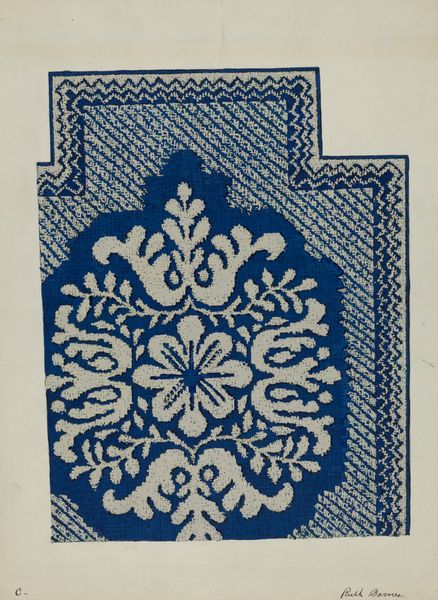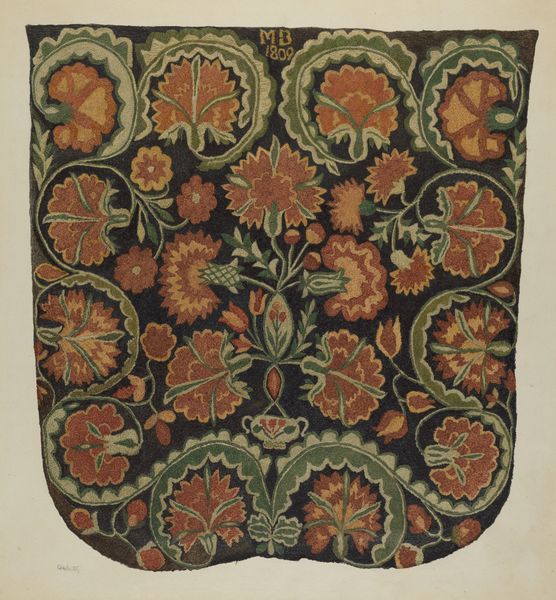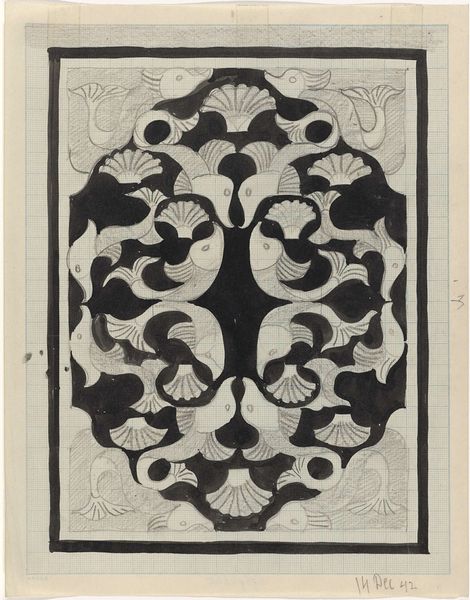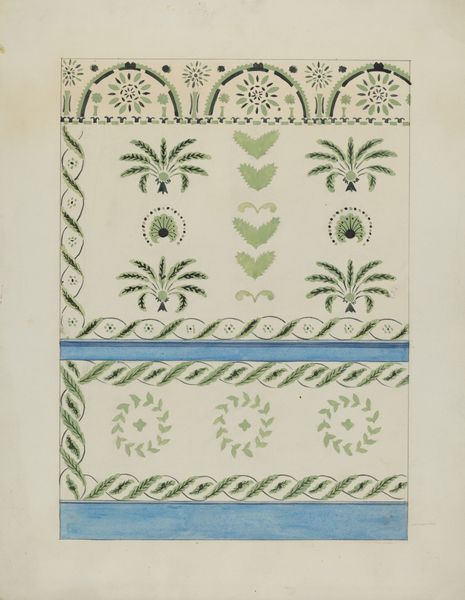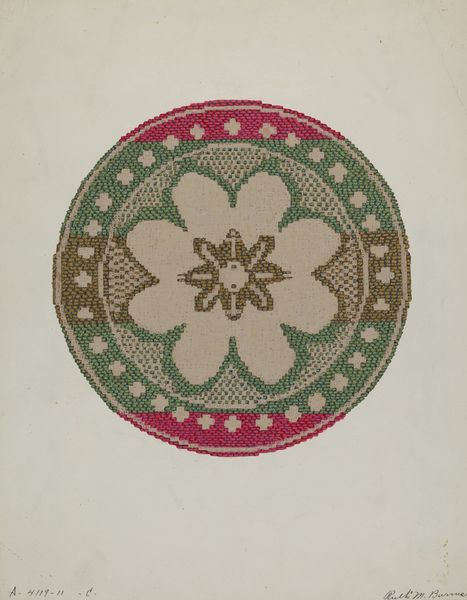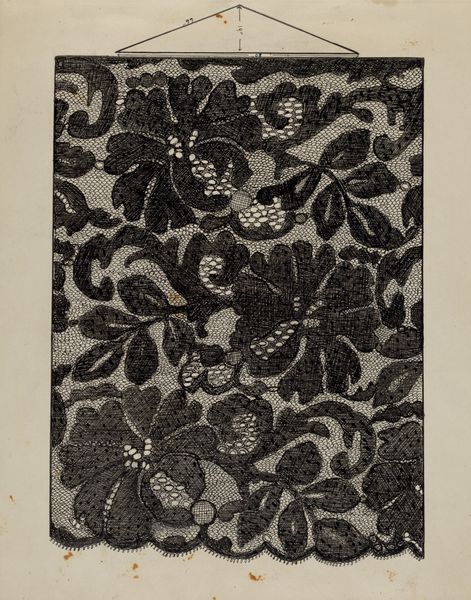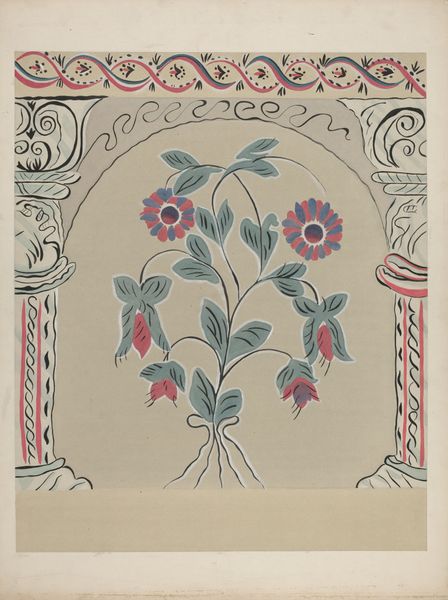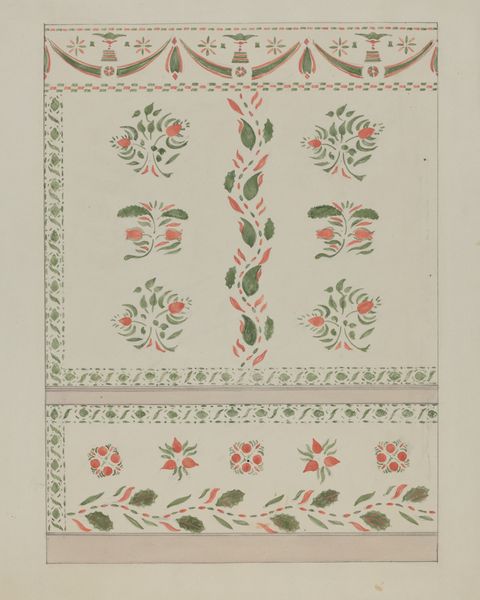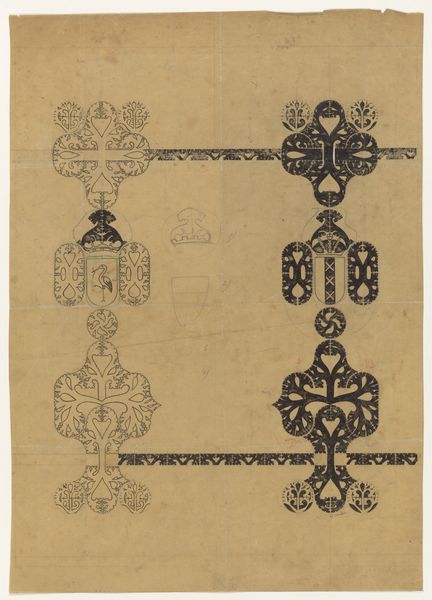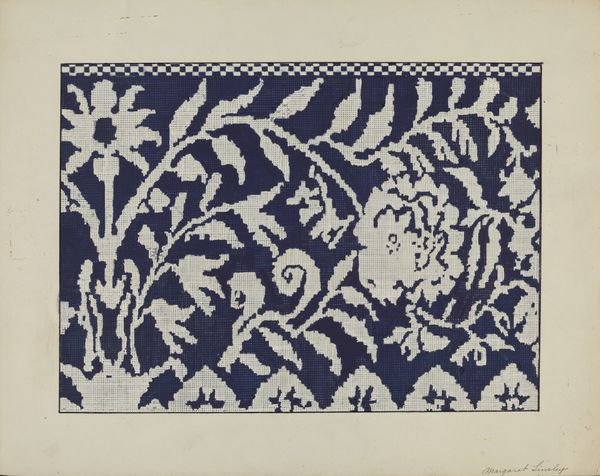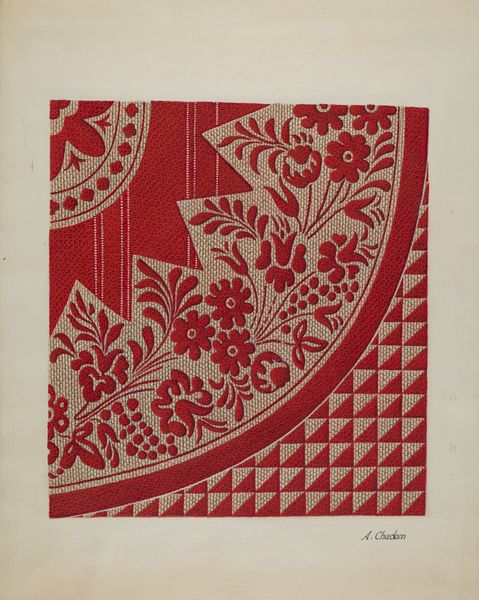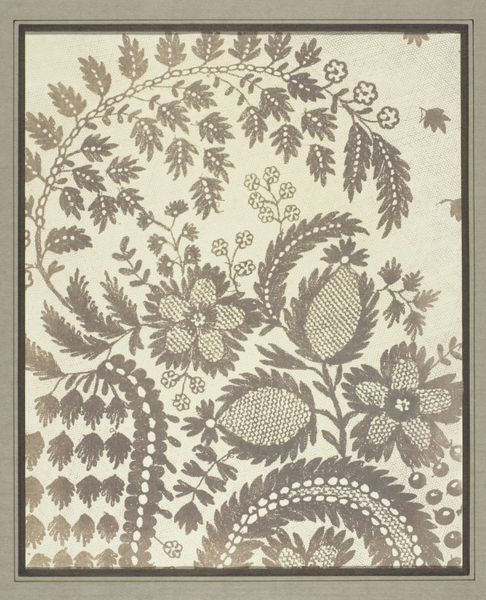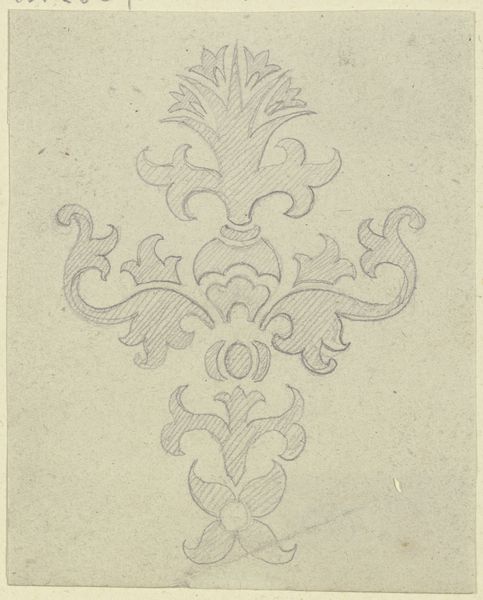
drawing, textile
#
drawing
#
pattern
#
textile
#
linocut print
#
watercolor
Dimensions: overall: 35.6 x 28.1 cm (14 x 11 1/16 in.) Original IAD Object: 7" wide; 10 1/2" long
Copyright: National Gallery of Art: CC0 1.0
Editor: So, this is a textile design, a "Coverlet" created around 1937 by an artist named Barnes. It appears to be a linocut print and watercolor on paper. I find the texture quite striking. How can we unpack the creation and purpose of such an artwork? Curator: Considering this "Coverlet", let’s examine the process and materials first. The artist chose linocut and watercolor – not traditionally "high art" media, but accessible and reproducible. Think about the social context of the 1930s. What kind of economic factors could have encouraged these choices of media? Editor: I see your point! The Great Depression was ongoing. Could these accessible materials imply an effort to make art, perhaps design for everyday items, more affordable and accessible? Curator: Precisely. And it challenges this artificial hierarchy between fine art and craft. Who was consuming textiles like these, and what did the patterns symbolize to them? The labor involved in both designing and then producing a textile, like a coverlet, is important to consider. It moves art from something purely aesthetic to something functional, and deeply tied to the material conditions of its creation. Editor: So, instead of focusing on the purely aesthetic qualities, we should consider how the economic and social conditions informed the artist's choice of materials and the eventual use of the design? Curator: Absolutely! Consider how this intersects with the availability of materials and the means of production during that era. What impact does mass production have on handmade goods? Editor: This is definitely a fresh perspective. I typically looked at the design elements alone, but this materialist approach connects the piece to its historical moment in a tangible way. Curator: Seeing the artwork in connection to its historical moment and material composition allows a richer understanding and engagement with the creative endeavor. It reveals the relationship of the object to society.
Comments
No comments
Be the first to comment and join the conversation on the ultimate creative platform.
